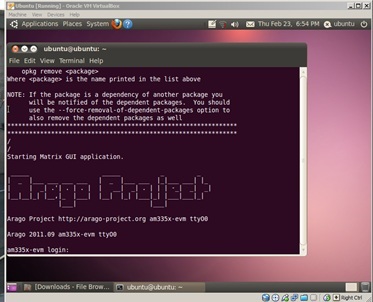I've installed the TI supplied microSD card into the Beaglebone and connected it to my Windows PC. I'm able to access the serial shell and get the "am335x-evm login:" prompt.
On my windows box I've opened the /windows_users/windows_users.html file where it states "You will need to insert the USB SD Card Reader into a Linux machine" and provides instructions on setting up a Linux env.
I've installed VirtualBox and have a Ubuntu 10.4 image running. Next step (I believe) is to install the tool chain via the "START_HERE.sh" script referenced in the documents.
Does this require that I use a separate USB card reader and make it accessible to Virtual Box as described in the wiki?
I'm confused by the statement "you will need to insert *the* USB SD card reader...." - it makes it sound like the USB card reader is included? Or is the beaglebone supposed to look like a SD card reader to Windows?
Thanks,
Dan


